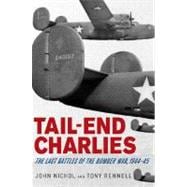
Note: Supplemental materials are not guaranteed with Rental or Used book purchases.
Purchase Benefits
What is included with this book?
| List of Illustrations | p. ix |
| Preface: Shoulder to Shoulder | p. 1 |
| In the Firing Line | p. 13 |
| Flying Fortress Britain | p. 37 |
| Boys into Men | p. 71 |
| Flying in the Face of Fear | p. 103 |
| No Early Returns | p. 128 |
| Orders from on High | p. 146 |
| D-Day and Beyond | p. 177 |
| Back to the Cities | p. 206 |
| The Last Christmas? | p. 233 |
| Burning Dresden | p. 254 |
| Face to Face with the Enemy | p. 285 |
| Finishing the Job | p. 310 |
| Victory? | p. 338 |
| Forgotten Heroes | p. 360 |
| Notes | p. 373 |
| References | p. 401 |
| Acknowledgments | p. 407 |
| Index | p. 409 |
| Table of Contents provided by Ingram. All Rights Reserved. |
The New copy of this book will include any supplemental materials advertised. Please check the title of the book to determine if it should include any access cards, study guides, lab manuals, CDs, etc.
The Used, Rental and eBook copies of this book are not guaranteed to include any supplemental materials. Typically, only the book itself is included. This is true even if the title states it includes any access cards, study guides, lab manuals, CDs, etc.
Excerpted from Tail-End Charlies: The Last Battles of the Bomber War, 1944-45 by John Nichol, Tony Rennell
All rights reserved by the original copyright owners. Excerpts are provided for display purposes only and may not be reproduced, reprinted or distributed without the written permission of the publisher.